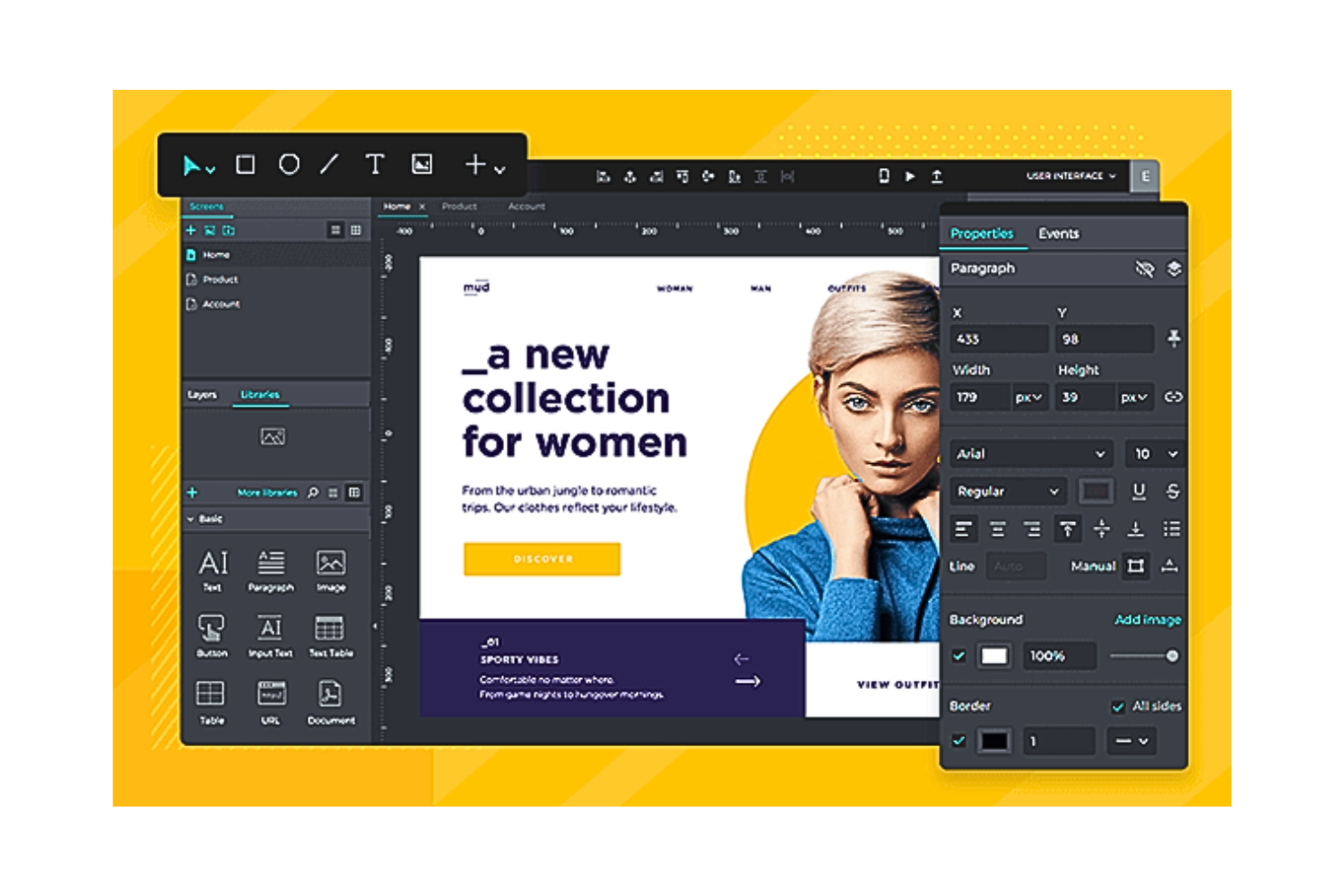Opening the Tricks of Effective Web Design Johannesburg Professionals
Opening the Tricks of Effective Web Design Johannesburg Professionals
Blog Article
Discovering the Essential Principles and Ideal Practices of Reliable Website Design for Boosted Individual Experience and Engagement

Significance of User-Centered Design
User-centered style (UCD) functions as a cornerstone of efficient web layout, stressing the necessity of customizing electronic experiences to meet the demands and choices of customers. By focusing on the user's point of view, UCD makes certain that websites are not just useful but additionally user-friendly and engaging.
The relevance of UCD hinges on its ability to enhance individual complete satisfaction and retention. When customers discover a web site easy to browse and lined up with their expectations, they are more probable to return and suggest it to others. This approach cultivates a much deeper psychological connection, enabling brands to build count on and commitment amongst their target market.
In addition, UCD facilitates the recognition of individual discomfort points via research study and screening, permitting designers to resolve these issues proactively. By entailing users in the design procedure, whether with meetings, surveys, or functionality screening, developers gain beneficial insights that inform far better decision-making.
Eventually, the application of UCD not only improves the overall user experience yet additionally drives measurable company results. Websites that embrace user-centered methods have a tendency to see greater conversion prices and boosted performance metrics, highlighting the critical role of UCD in contemporary website design.
Trick Layout Concepts
Efficient internet layout is based in crucial design concepts that improve use and visual charm, additional building on the foundation established by user-centered layout. These concepts include consistency, visual pecking order, and feedback, which together create an user-friendly customer experience.
This experience aids users recognize the interface and navigate with simplicity, strengthening brand identification. Visual power structure, achieved through placement, shade, and size, guides customers' attention to the most important content, making information more obtainable and interesting.

Integrating these crucial design concepts cultivates an unified blend of performance and aesthetics, eventually bring about boosted user satisfaction and involvement. By adhering to these foundational principles, designers can create sites that not just look appealing yet also use a efficient and pleasurable user experience.
Best Practices for Functionality
Usability is a keystone of successful website design, incorporating a series of techniques that enhance the total experience for individuals. To achieve optimum usability, it is essential to focus on user-friendly navigation. Logical paths and clear food selections permit individuals to locate details swiftly, decreasing aggravation and increasing fulfillment.
Furthermore, employing consistent style aspects, such as color design and typography, cultivates familiarity and eases navigating. Users should not have to relearn exactly how to interact with different areas of the site. Ensuring that your internet site is receptive across numerous gadgets is essential, as a raising number of customers gain access to content on mobile tools.
Another best practice includes integrating access attributes, such as alt message for images and key-board navigation choices, to site here accommodate individuals with varied needs. Examining use with user feedback is important, as real-world understandings can reveal unexpected issues and locations for enhancement.
Enhancing Visual Pecking Order
A distinct aesthetic hierarchy is vital for leading customers via a web site, permitting them to quickly recognize the significance of numerous elements on a page. This can be attained via the critical use of size, spacing, contrast, and shade (web design Johannesburg). Larger aspects normally draw interest initially, making headings or essential calls to activity more noticeable
Color can also play a considerable role in developing hierarchy; for circumstances, utilizing a bold shade for switches can assist them stand out versus a much more soft history. Additionally, contrast in between text and background is crucial for readability, guaranteeing that individuals can quickly browse material without stress.
Whitespace, or unfavorable room, is another important facet of visual hierarchy. It offers breathing area around components, helping to team related items and directing the user's eye from one area to one more. By efficiently utilizing these layout principles, internet designers can create a seamless customer experience that enhances involvement and reduces cognitive lots.
Inevitably, a thoughtfully constructed aesthetic pecking order not only improves functionality but likewise fosters a more instinctive interaction with the web site, bring about higher complete satisfaction and retention prices amongst users.
Flexible and responsive Design
Aesthetic hierarchy plays a significant role in user experience, and its effectiveness should prolong throughout various gadgets and screen dimensions. Adaptive click here to read and responsive style are 2 necessary strategies to attaining this goal. Responsive style employs fluid grids, flexible photos, and media queries to readjust the design and web content dynamically, making sure that individuals enjoy a smooth experience no matter the gadget. This method allows for a single codebase, streamlining maintenance and updates while improving uniformity across platforms.
In contrast, flexible design utilizes distinctive layouts customized to certain screen dimensions. By detecting the customer's tool and offering an optimized design, adaptive design can provide a more personalized experience. This commonly needs numerous variations of pop over to this site the exact same material, which can complicate management and increase advancement time.
Both approaches have their values, and the choice between them depends on project needs, target market, and source accessibility. Eventually, the goal is to develop an engaging, user-friendly interface that preserves aesthetic power structure and functionality throughout all systems. A well-implemented receptive or adaptive layout not just boosts customer experience yet likewise urges higher engagement and retention prices, critical for the success of any internet project.
Verdict
By prioritizing usability with instinctive navigation, visual hierarchy, and receptive formats, developers can develop systems that provide to diverse customer requirements. Emphasizing customer responses and aesthetic factors to consider eventually promotes satisfaction, retention, and boosted efficiency in the electronic landscape.
In the rapidly progressing digital landscape, comprehending the basic concepts and best methods of reliable internet design is extremely important for cultivating enhanced user experience and engagement - web design Johannesburg.Usability is a keystone of effective web design, encompassing a range of practices that boost the overall experience for users. By properly employing these design principles, internet developers can create a seamless individual experience that improves interaction and lowers cognitive lots
Responsive style uses liquid grids, adaptable pictures, and media inquiries to change the layout and web content dynamically, making sure that users delight in a smooth experience regardless of the device. A well-implemented responsive or flexible style not just boosts customer experience yet also encourages higher engagement and retention prices, critical for the success of any kind of web task.
Report this page